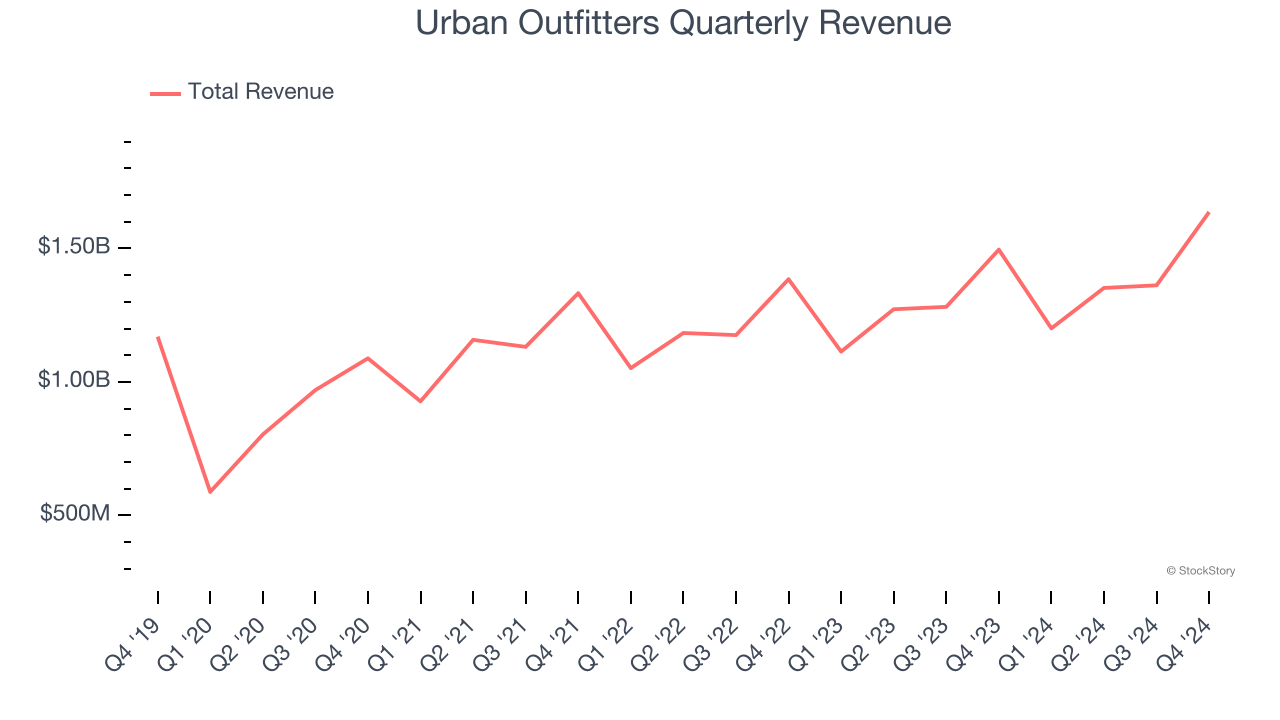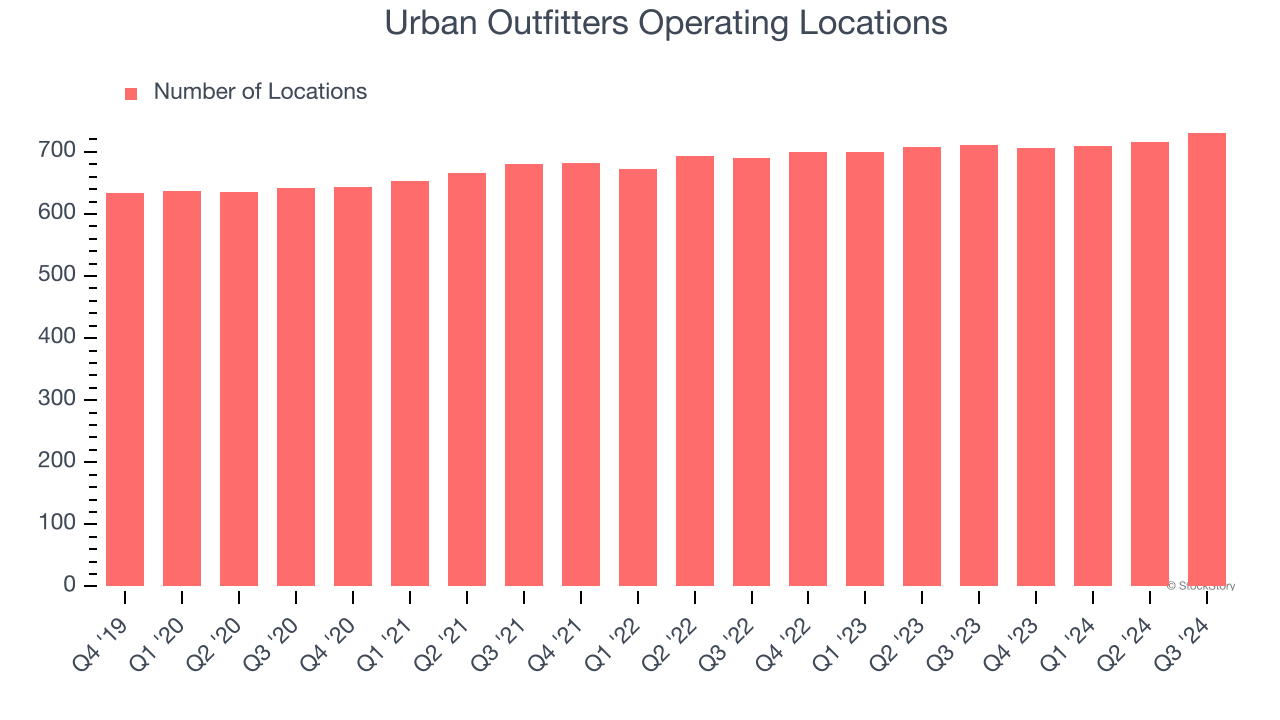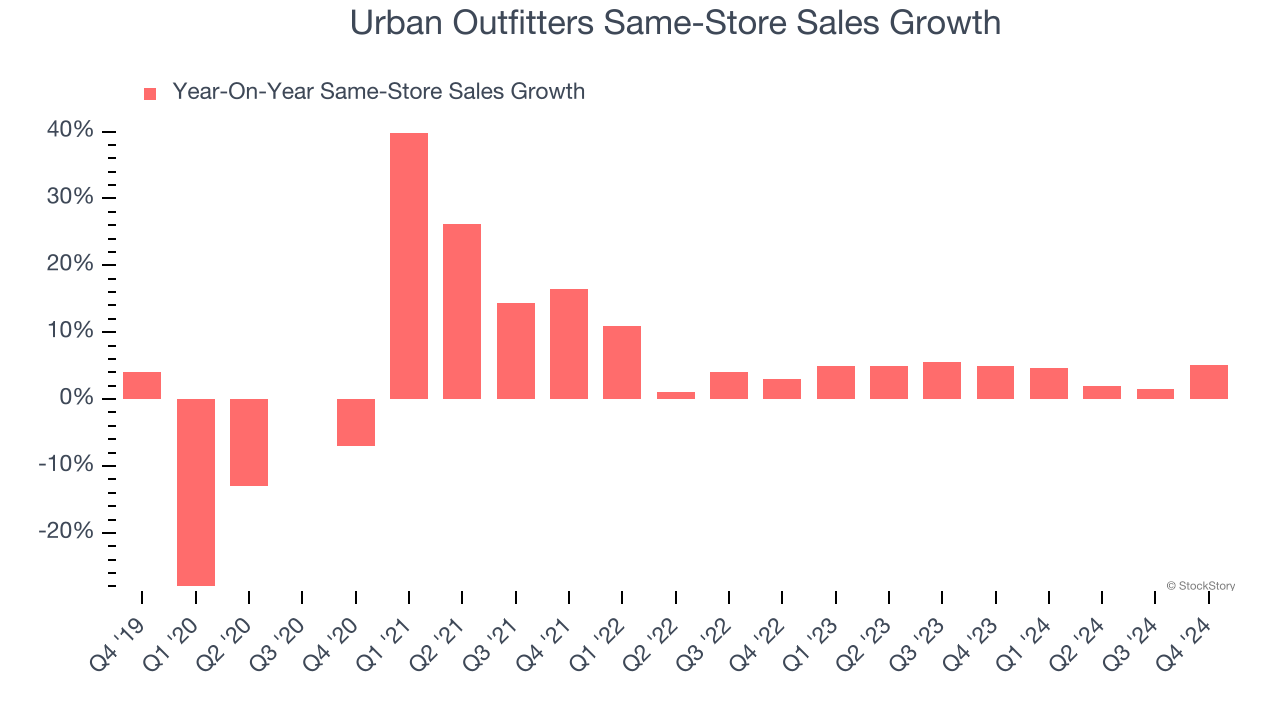
Clothing and accessories retailer Urban Outfitters (NASDAQ: URBN) met Wall Street’s revenue expectations in Q4 CY2024, with sales up 9.4% year on year to $1.64 billion. Its non-GAAP profit of $1.04 per share was 9.3% above analysts’ consensus estimates.
Is now the time to buy Urban Outfitters? Find out by accessing our full research report, it’s free.
Urban Outfitters (URBN) Q4 CY2024 Highlights:
- Revenue: $1.64 billion vs analyst estimates of $1.63 billion (9.4% year-on-year growth, in line)
- Adjusted EPS: $1.04 vs analyst estimates of $0.95 (9.3% beat)
- Operating Margin: 7.7%, up from 3.8% in the same quarter last year
- Free Cash Flow Margin: 17.2%, up from 12.1% in the same quarter last year
- Same-Store Sales rose 5.1% year on year, in line with the same quarter last year
- Market Capitalization: $4.86 billion
“We are pleased to announce record Q4 revenues and full-year profits,” said Richard A. Hayne, Chief Executive Officer.
Company Overview
Founded as a purveyor of vintage items, Urban Outfitters (NASDAQ: URBN) now largely sells new apparel and accessories to teens and young adults seeking on-trend fashion.
Apparel Retailer
Apparel sales are not driven so much by personal needs but by seasons, trends, and innovation, and over the last few decades, the category has shifted meaningfully online. Retailers that once only had brick-and-mortar stores are responding with omnichannel presences. The online shopping experience continues to improve and retail foot traffic in places like shopping malls continues to stall, so the evolution of clothing sellers marches on.
Sales Growth
Examining a company’s long-term performance can provide clues about its quality. Any business can put up a good quarter or two, but the best consistently grow over the long haul.
With $5.55 billion in revenue over the past 12 months, Urban Outfitters is a mid-sized retailer, which sometimes brings disadvantages compared to larger competitors benefiting from better economies of scale.
As you can see below, Urban Outfitters’s sales grew at a tepid 6.9% compounded annual growth rate over the last five years (we compare to 2019 to normalize for COVID-19 impacts), but to its credit, it opened new stores and increased sales at existing, established locations.

This quarter, Urban Outfitters grew its revenue by 9.4% year on year, and its $1.64 billion of revenue was in line with Wall Street’s estimates.
Looking ahead, sell-side analysts expect revenue to grow 6.4% over the next 12 months, similar to its five-year rate. This projection is healthy and indicates the market is baking in success for its products.
Unless you’ve been living under a rock, it should be obvious by now that generative AI is going to have a huge impact on how large corporations do business. While Nvidia and AMD are trading close to all-time highs, we prefer a lesser-known (but still profitable) stock benefiting from the rise of AI. Click here to access our free report one of our favorites growth stories.
Store Performance
Number of Stores
A retailer’s store count often determines how much revenue it can generate.
Over the last two years, Urban Outfitters opened new stores quickly, averaging 2.2% annual growth. This was faster than the broader consumer retail sector.
When a retailer opens new stores, it usually means it’s investing for growth because demand is greater than supply, especially in areas where consumers may not have a store within reasonable driving distance.
Note that Urban Outfitters reports its store count intermittently, so some data points are missing in the chart below.

Same-Store Sales
A company's store base only paints one part of the picture. When demand is high, it makes sense to open more. But when demand is low, it’s prudent to close some locations and use the money in other ways. Same-store sales gives us insight into this topic because it measures organic growth for a retailer's e-commerce platform and brick-and-mortar shops that have existed for at least a year.
Urban Outfitters’s demand has been spectacular for a retailer over the last two years. On average, the company has increased its same-store sales by an impressive 4.2% per year. This performance suggests its rollout of new stores is beneficial for shareholders. We like this backdrop because it gives Urban Outfitters multiple ways to win: revenue growth can come from new stores, e-commerce, or increased foot traffic and higher sales per customer at existing locations.

In the latest quarter, Urban Outfitters’s same-store sales rose 5.1% year on year. This performance was more or less in line with its historical levels.
Key Takeaways from Urban Outfitters’s Q4 Results
Despite in-line revenue this quarter, we liked that Urban Outfitters beat on gross and operating margin, leading to EPS outperformance compared to Wall Street’s estimates. Overall, we think this was a solid quarter. The stock traded up 1.9% to $54 immediately following the results.
Urban Outfitters may have had a good quarter, but does that mean you should invest right now? When making that decision, it’s important to consider its valuation, business qualities, as well as what has happened in the latest quarter. We cover that in our actionable full research report which you can read here, it’s free.




